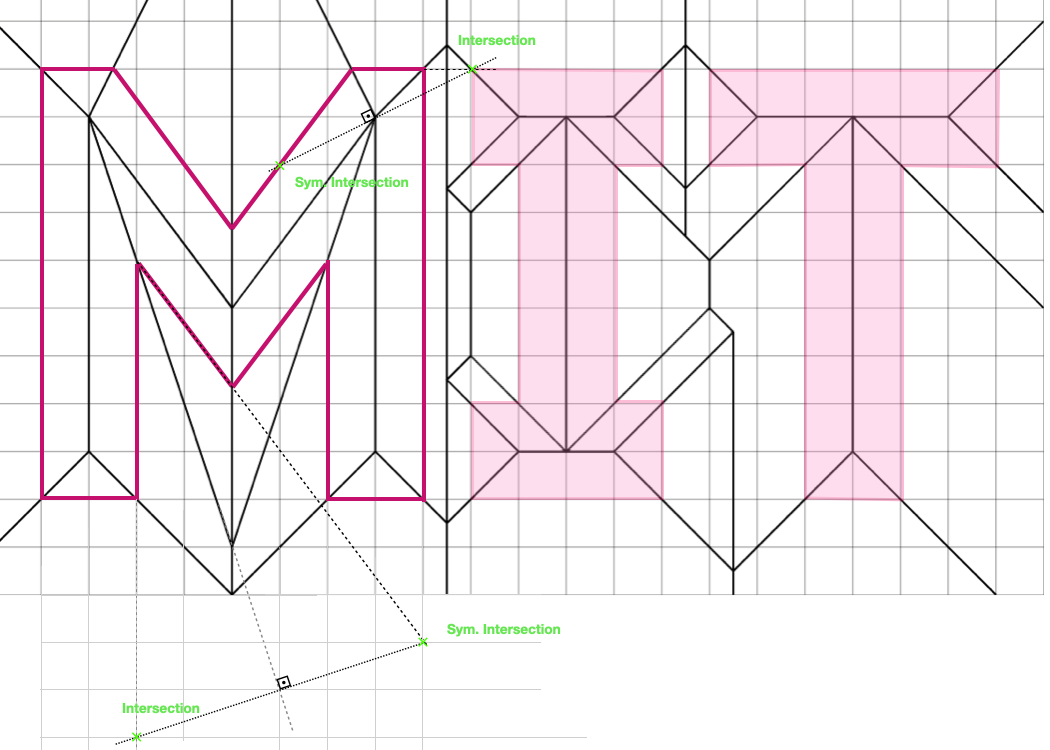This 5.2 question was done in with my clasmate Alex Berke.
Problem Set 5.
Problem 5.1 Make a first proposal of what you spect to be your final project based on:
Problem 5.2 [Skeletal Reconstruction]. Draw a polygon, or a set of disjoint polygons, whose straight skeleton is given by the black lines in the following diagram:
This 5.2 question was done in with my clasmate Alex Berke.
I was able to find without a problem all bisector lines for leters I and T without a problem because of its orthogonality . I wanted to draw exactly the weird slopes that the M have on its non orthogonal angles. To do so I used the grid. At the top skeleton line that breaks orthogonality, it can be seen that has a slope of 2:1. I drawed a normal line to the skeleton. I saw that if I placed that line in the vertex where meets other skeleton lines, it will cut the horizontal line (top part of the M) in a specific point of the grid. Applying symmetry to this intersection will tell me a ponint with the other (symmetric respect the skeleton line that forces to be bisector line) line will pass forcing to that root be a bisector of those pair of lines. Same method were applied to the lower weird angle lines.
 back to menu
back to menu
